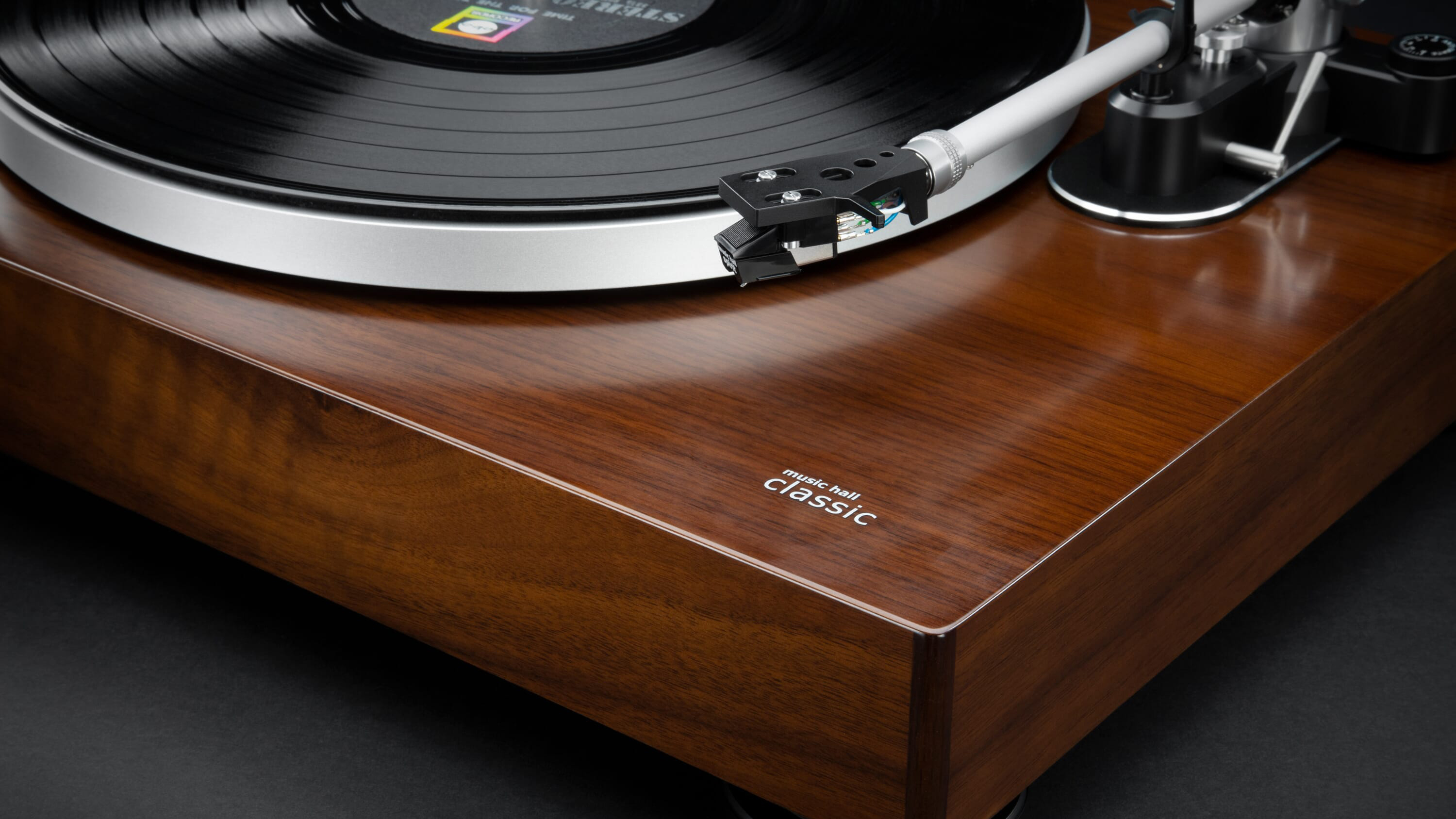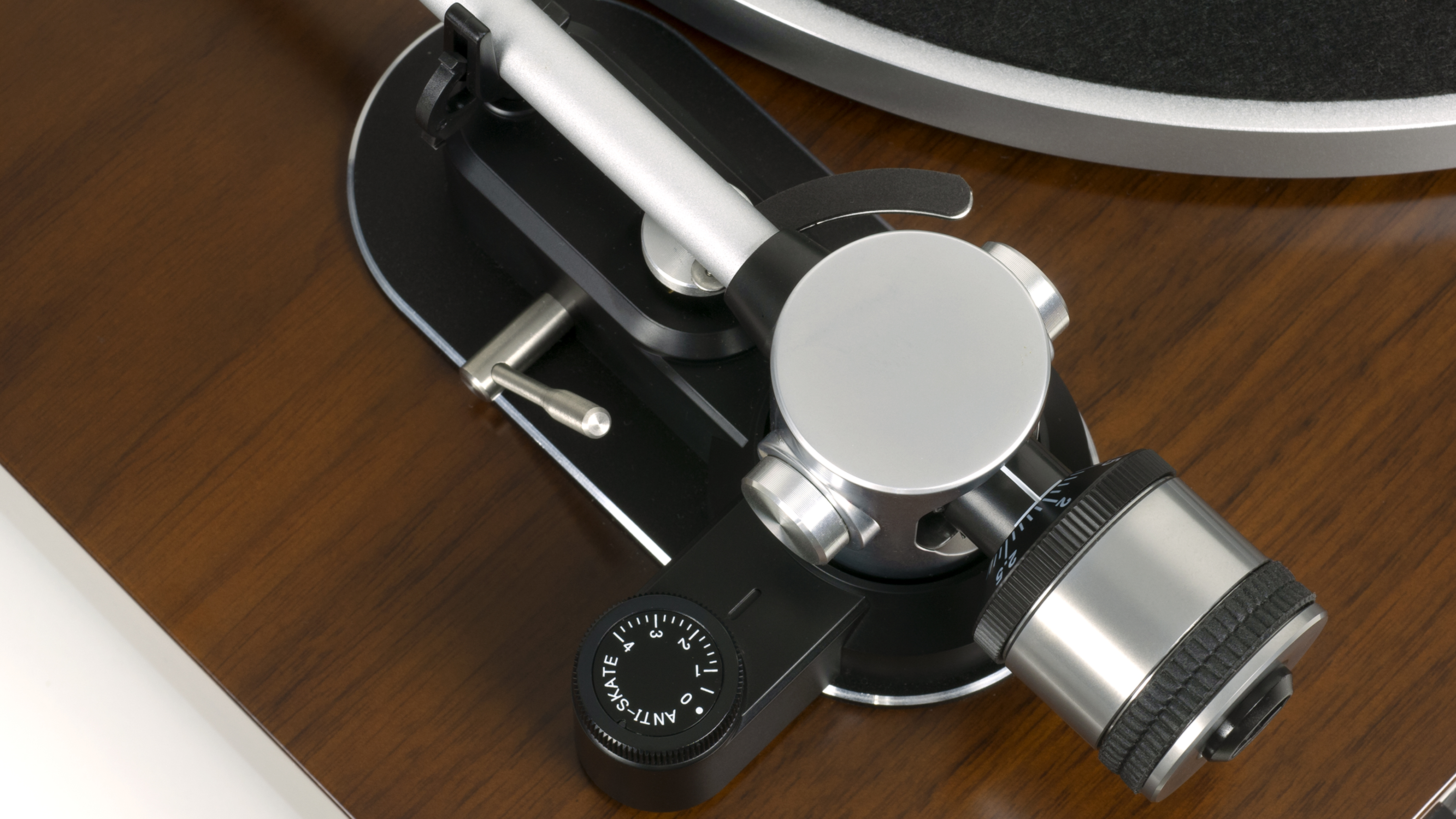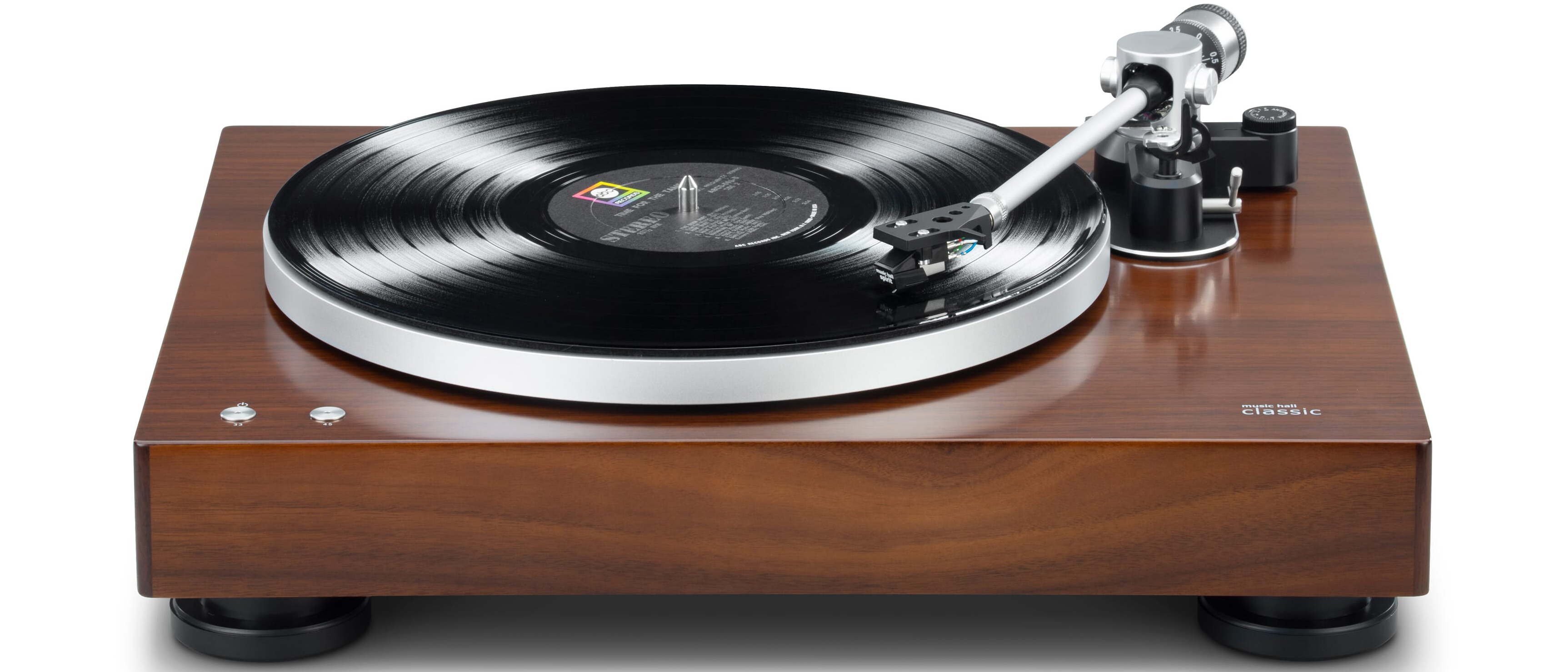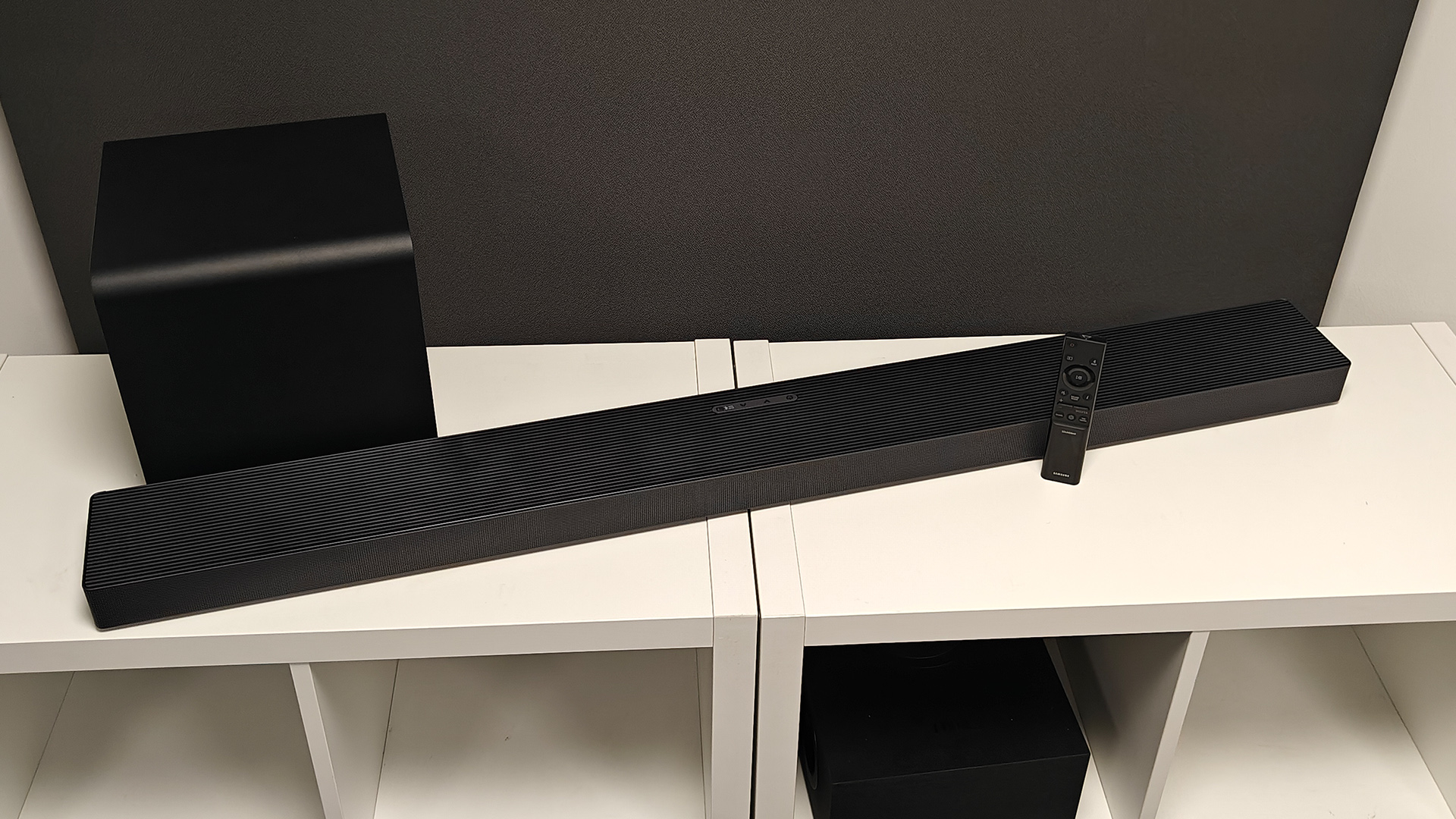What Hi-Fi? Verdict
With an elegant design, wonderfully sturdy construction, and audio performance to match, it's a marvel that the Music Hall Classic manages to be so affordable
Pros
- +
Excellent performance
- +
Automation plus RIAA
- +
Ready to roll out of the box
Cons
- -
No true power switch
Why you can trust What Hi-Fi?

This review and test originally appeared in Australian Hi-Fi magazine, one of What Hi-Fi?’s sister titles from Down Under. Click here for more information about Australian Hi-Fi, including links to buy individual digital editions and details on how best to subscribe.
It takes a bit of chutzpah to name a brand-new record player a ‘Classic’, but anyone who has met Music Hall’s founder, owner and highly outspoken spokesperson, Roy Hall, will already know that he was not only at the very front of the line when chutzpah was being handed out, but that he circled back for a second helping.
Mind you, he’s pretty much on the money when it comes to his latest creation’s name. The Music Hall Classic has all the features that were most prized on the ‘classic’ turntables of yesteryear, built by the likes of Garrard, Acoustic Research, BSR and others. Features such as an automatic stop and tonearm lift at the end of an LP (known then as ‘semi-automatic' because the tonearm was simply lifted, and not moved back to its rest on the tonearm post) and a removable headshell.
But perhaps the most important reason for calling this new Music Hall ‘Classic’ is simply down to its appearance. Finished in a walnut veneer and coming standard with an old-fashioned traditional hinged clear plastic dust cover, this 2022-launched deck really does look like it could have been built back in the 60s or 70s.
Of course, when you look at some of its other features, such as the built-in RIAA phono preamplifier (switchable, in the event you’d rather not use it) and the touch-sensitive electronic speed control, or the precision drive DC motor and the quality of the bearing, you realise that this is a turntable that could never have been built back in the 60s or 70s, such are its electronic and electromechanical sophistications.

- The best record players available: turntables for every budget
Design
Roy Hall (and therefore Music Hall) is renowned for his customer service, and for making sure that a) anyone who purchases one of his products doesn’t have to fork out any more money in order to get that product up and running, and b) that his customers don’t need a degree in turntable design to ensure they have the correct cartridge to best-suit the tonearm and that the cartridge is correctly aligned.
So when you unpack your Music Hall Classic turntable, you’ll find you have absolutely everything you need to start playing LPs straight away. The phono cartridge is not only installed but also correctly aligned in the tonearm. The dustcover comes standard. And Music Hall even supplies a good-quality phono cable lead set, complete with a separate earth wire (a wire you may or may not need depending on how you connect the Classic to your system).
The fact that it has an RIAA preamplifier built in means that your amplifier does not require the otherwise obligatory phono input – you can plug the output from the Music Hall Classic into any conventional line-level input or even into a powered loudspeaker or soundbar if you’d prefer.
The latest hi-fi, home cinema and tech news, reviews, buying advice and deals, direct to your inbox.
You do have to do some assembly, of course, because turntables are, after all, relatively fragile electro-mechanical devices that need to be disassembled in order that they can withstand the rigors of international transportation. But Music Hall makes assembly easy for you.
First, the assembly instructions are first-rate. Second, the drive belt comes pre-wrapped around the sub-platter, complete with a tag that allows you to move it out over the drive pulley without having to touch the belt at all (you need to avoid touching turntable belts with your fingers, lest oils or sweat transfer to the rubber, to potentially cause slippage, but also deterioration of the belt itself). The hinges for the dust-cover are all pre-assembled and pre-attached.
Indeed the most complicated things you will have to do are the simple processes of fitting the counterweight, static-balancing the tonearm, dialing in the correct tracking force (2g) for the supplied Music Hall Spirit moving-magnet cartridge, and turning the rotary anti-skating dial so that its setting mirrors that of the counterweight.

You may be intrigued about the slider switch at the rear of the Classic turntable that allows you to switch off one of its most desirable features so that the turntable does not switch itself off automatically once an LP has finished playing. Essentially, if you flick this switch it transforms the turntable from being a semi-automatic one into being a completely manual deck.
The problem with manual operation is not so much the that the stylus will end up sending a ‘click’, ‘click’, ‘click’, sound through your speakers once a record side is complete as that if you do not stop this from happening in a timely manner, you’re going to ruin your stylus. Apparently, the reason for Music Hall providing this option is that some people think that end-of-play auto-sensing mechanisms affect sound quality while a record is playing and Music Hall wants to please everyone.
The rear of the turntable is also where the switch to turn the inbuilt RIAA phono preamplifier on or off is located, plus there’s also a ‘power’ push-button on the rear as well. Note that ‘power’ switch does not switch off the 240V mains power, only the 12-volt DC power from the switch-mode power pack that plugs into your 240V wall socket. Frankly, we wouldn’t bother with this switch. We'd leave it on all the time, so the turntable is on standby when it's not being used (in which mode it will consume all of 0.05-watts, so you’ll still be ‘green’). We would switch it off at the wall only if we weren't going to be using the turntable for a week or more.
Music Hall says that the four huge springy feet fitted to the Classic are adjustable – and indeed they are – but the further out they go, the ‘wobblier’ they get, so try not to turn your Classic into a blancmange!
Manufacturing
Music Hall has a very long history in the turntable business. Indeed it was founded in the USA by Roy Hall specifically to import and distribute Revolver turntables from the UK, after Hall parted ways with Linn of Scotland (though he still remains best mates with Linn’s founder Ivor Tiefenbrun, who he’s known since childhood when they lived around the corner from each other, and grew up doing all the crazy things teenage boys are not to do).
Hall started selling Music Hall branded turntables as a favour for another friend of his, Heinz Lichtenegger, the owner of Pro-Ject turntables (and whose wife Jozefína, owns European Audio Team, a manufacturer of extremely high-end turntables). Heinz was not happy with his US distributor’s performance and wanted to go into competition with himself to stir things up.
Hall designed a turntable based on technology he’d learned at Linn and from during his time distributing and repairing Revolver turntables, as well as technology developed by Pro-Ject, and the first Music Hall turntable arrived in the US shortly afterward.

Lichtenegger has been building Musical Hall turntables in his Czech factory ever since, but – and it’s a big 'but' – Musical Hall Classic turntables are not being built by Pro-Ject, but in China, in a factory Hall discovered when he was looking to bring out a budget turntable.
“We have been doing business with this company for many years – our USB-1 is made there,” he told SoundStage’s Tom Moon. “They started to come out with designs that were different from the ones offered by Pro-Ject. They also hit price points that were hard to beat.”
“Our long-term relationship with them meant that we were first in line to help
develop and bring these ’tables to market.”
- The best cartridges: stylus options for your turntable
Performance
We run a speed check on the Music Hall Classic and are pretty chuffed to see the strobe check-disc sitting rock-solid at both 33.33 and 45rpm speeds. None of the usual ‘hunting’ to and fro, not even a gradual creep of the strobe bars. It is quite amazing for a belt-drive turntable to deliver this level of rotational stability.
When switching between speeds, we are impressed by the accurate response of the speed selectors. They’re not push-buttons, but touch-sensitive piezo sensors. Their sensitivity is exemplary, as well. Only the briefest, lightest touch is required. When the platter is not moving, the ‘33’ rpm button has a red LED glowing at its centre.
Touch this button and the platter will almost instantly come up to speed, and the colour of the LED will change to bright blue. If you then press the ‘45’ button, platter speed will increase to 45 rpm. Touching either button when playing at that speed will cause the platter to stop. Note that if you do this, the tonearm will not lift automatically – another reason for the description of the turntable as being ‘semi-automatic.’
Since we've mentioned these buttons, we just have to tell you what happens if the turntable is switched to ‘auto’ and the stylus reaches the run-out groove. What happens is that the 33 LED starts flashing for eight seconds, after which both the 33 and 45 LEDs flash together for a further eight seconds, after which the tonearm lifts from the record surface and the LP stops rotating. It’s like a mini light-show. Someone sure had fun programming that sequence of events!

But all this style and pizzazz would be for naught if the Classic added any audible wow and/or flutter to the music playing back from an LP, so we load up our ultimate ‘acid-test’ recording, a classical work by French pianist and composer Erik Satie. If we didn’t hear any wow or flutter when playing back his famous Gymnopédie No. 1, we knew we'd never hear any wow or flutter with any other music, irrespective of genre, so we listen very, very closely, and heard …. nothing. No wow, no flutter, not even a hint of it. Just like its speed accuracy, the Music Hall’s speed stability is very, very impressive.
We also listen to Liszt’s Légende No 1 St François d’Assise which is not only a wonderful test piece for wow and flutter, but also totally enjoyable to listen to, so it’s great for regular rotation if I have several ‘tables to assess within a short space of time. We prefer Nikolai Demidenko’s version of Légendes, but Leslie Howard’s version is very good too. As for the sound of the Music Hall Spirit MM cartridge when playing the Liszt, it is excellent. The low frequencies are full and solid, the midrange completely linear and the high frequencies were sweet and extended.
We are also impressed by the stereo imaging of the Spirit cartridge, as well as by the separation between the channels, which is such that instruments that are in the left channel did not ‘bleed’ into the right and vice versa.
It’s such a good cartridge that we wouldn’t bother replacing it until we needed a new stylus, at which point in time we’d likely switch to a model such as the Audio-Technica AT-VM95EN simply because of the more-ready availability of replacement styluses for this cartridge, including the ready availability of different diamond profiles (conical, elliptical etc) for these replacement styluses. This wouldn’t be a leap for the Classic because it is Audio-Technica that makes the Spirit cartridge for Music Hall.
Final verdict
The Music Hall Classic turntable is particularly good value here in Australia, because its distributor, Indi Imports, believes in parity (or better!) pricing with the same product in other countries. But even if you had to pay more, you’d still be getting value for money, because the Music Hall Classic looks fantastic, performs very well and is built to last a lifetime
Australian Hi-Fi is one of What Hi-Fi?’s sister titles from Down Under and Australia’s longest-running and most successful hi-fi magazines, having been in continuous publication since 1969. Now edited by What Hi-Fi?'s Becky Roberts, every issue is packed with authoritative reviews of hi-fi equipment ranging from portables to state-of-the-art audiophile systems (and everything in between), information on new product launches, and ‘how-to’ articles to help you get the best quality sound for your home.
Click here for more information about Australian Hi-Fi, including links to buy individual digital editions and details on how best to subscribe.


